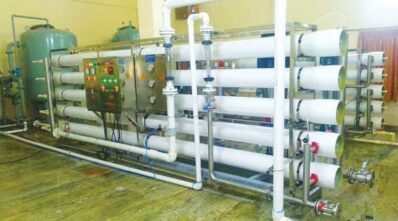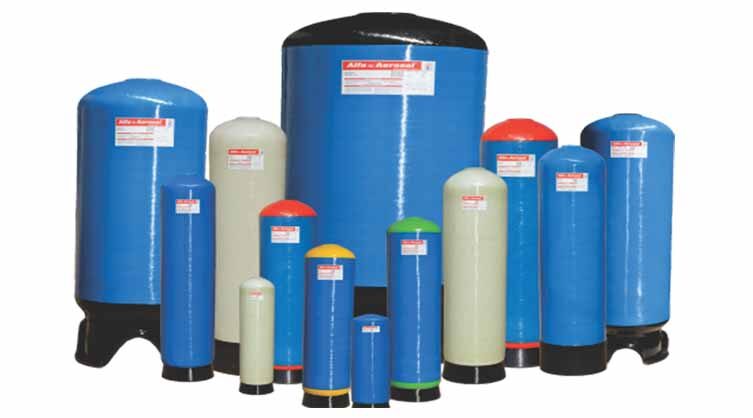To reduce water pollution and establish a dependable solution for water sustainability, greater wastewater treatment infrastructure for reclamation and reuse is needed.
India is a fast-developing economic power having the world’s second largest population. It is also the largest user of groundwater in the world. The availability of surface and ground water sources have been declining for decades and now the country is facing a severe water crisis that is becoming a critical issue. Niti Aayog has reported that more than 50% of the population today lack proper access to safe drinking water and about 2 lakh people die every year due to contaminated drinking water.
Wastewater Accumulation
It is estimated that Indian cities are generating nearly 72,368 MLD (million litres per day) of domestic sewage apart from 62,000 MLD of effluents coming out from industrial activities. The installed capacity of STPs is 31,841 MLD, out of which only 20,235 MLD is the actual utilised capacity. With the total 72,368 MLD sewage generated, only 20,235 MLD is treated which is just under 28% of total sewage being treated. This leaves a big gap of almost 72% of generated sewage not being treated and it is released untreated into water bodies.
Industries in India are also major consumers of freshwater. With the pace of industrial development increasing, water demand has been rising. A large quantity of the water consumed reappears as effluents; a major quantity of it is discharged into water bodies without treatment, leading to the water pollution. Approximately 62,000 MLD of industrial wastewater is generated, 60% of which is treated at the country’s 194 common effluent treatment plants (CETPs) and other facilities.
Wastewater Market
It is estimated that India’s wastewater treatment market was valued at USD 4.394 billion in 2019 is expected to grow at a CAGR of 12.76% over the forecast period to reach a total market size of USD 10.185 billion by 2026. The water and wastewater treatment technology market was valued at over USD 2.1 billion in 2021, and is projected to register a CAGR of greater than 8% during the period of 2022- 2027. The market size of water and wastewater treatment chemicals was worth USD 675 million in 2020 and growing at a healthy pace due to expansion of water supply network, increased industrial activities and stringent guidelines for compliance.
The growth patterns suggest that India is projected to generate 120 billion litres of wastewater from urban population and another 50 billion litres from the rural population by the year 2050. The Supreme Court of India and National Green Tribunal have issued several instructions and guidelines related to municipal and industrial wastewater treatment and the market is bound to grow steadily.

Valuable Resource
India with an increasing population and growing demand for water is not utilising the valuable resource of wastewater to augment water supply to cater the need of industries and irrigation. A greater consideration is needed to construct better wastewater treatment infrastructure for reclamation and reuse to reduce water pollution and create a dependable solution for water sustainability.
The absence of adequate infrastructure for collection and treatment, already depleting freshwater reserves are being polluted. One of the most important strategies revolving around water scarcity is treating the maximum quantity of generated wastewater and making it reusable for nonpotable purposes initially followed by augmenting drinking water. Municipalities across the country should be made responsible to treat and reuse as per guidelines and supply it to industries and famers to leverage this nutrient rich waste and potentially even turn it into a revenue stream for themselves. Suitable policy measures need to be formulated to encourage the reuse of treated wastewater for industrial and irrigation purposes.
Challenges
Among the first challenges of wastewater treatment facilities is its energy consumption. It is estimated that on an average these facilities alone may require about 1% to 3% of the total energy consumption of a country, representing a significant fraction of municipal energy bills.
The second major challenge is the disposal of generated sludge or biosolids. It is a byproduct in wastewater treatment, and can be transformed into high grade manure to be used in irrigation, forestry, and horticulture. The compositions of sewage sludge vary considerably depending on the wastewater composition and the treatment processes used. It can be viewed either as an organic and nutrient resource to be used beneficially or as a waste material to be disposed of.
Wastewater and its byproducts contain energy in different forms: chemical, thermal and potential. Traditionally, the only form of energy recovery from most wastewater treatment facilities consisted of anaerobic post-digestion of sludge, by which chemical energy methane is obtained as biogas that is converted into energy. But in India, most municipalities are not using it to extract energy and this valuable resource is wasted while their energy bills are rising.
Technology Intervention
The progress in the water and wastewater segment in terms of technology has been very encouraging especially use of new and innovative treatment methods, more advanced membranes, new age materials like graphene and ceramic, gas mixing technology for energy recovery, more efficient energy saving machineries, command and control system, digital apps to remote monitoring and better quality chemicals getting into mainstream usage. New applications are being adopted for removal of contaminants like arsenic, antimony or chromate and other harmful substances with the aim of efficient removal of toxics. Increasingly technology is playing an important role in wastewater treatment and with a lesser footprint.
Sahara Industry Contribution
With a focused approach to make a difference in the way water and wastewater are being treated, Sahara Industry and group companies have designed and manufactured advanced membranes, softeners, ozonators, sterilisers and other advanced systems for water and wastewater treatment plants. The innovative solutions created by the company have contributed immensely for environmental sustainability by effectively treating municipal and industrial wastewater thus helping to safeguard our ecosystem. Recycling wastewater further enhances reuse and social responsibility conforming pollution control norms. Sahara Industry has assembled a number of plants which are fully equipped with advanced technology and reliable treatment systems for different industries.
Expertise shared by: Mohammed Abdul Rahman,
CEO, Sahara Industry
Cookie Consent
We use cookies to personalize your experience. By continuing to visit this website you agree to our Terms & Conditions, Privacy Policy and Cookie Policy.





















